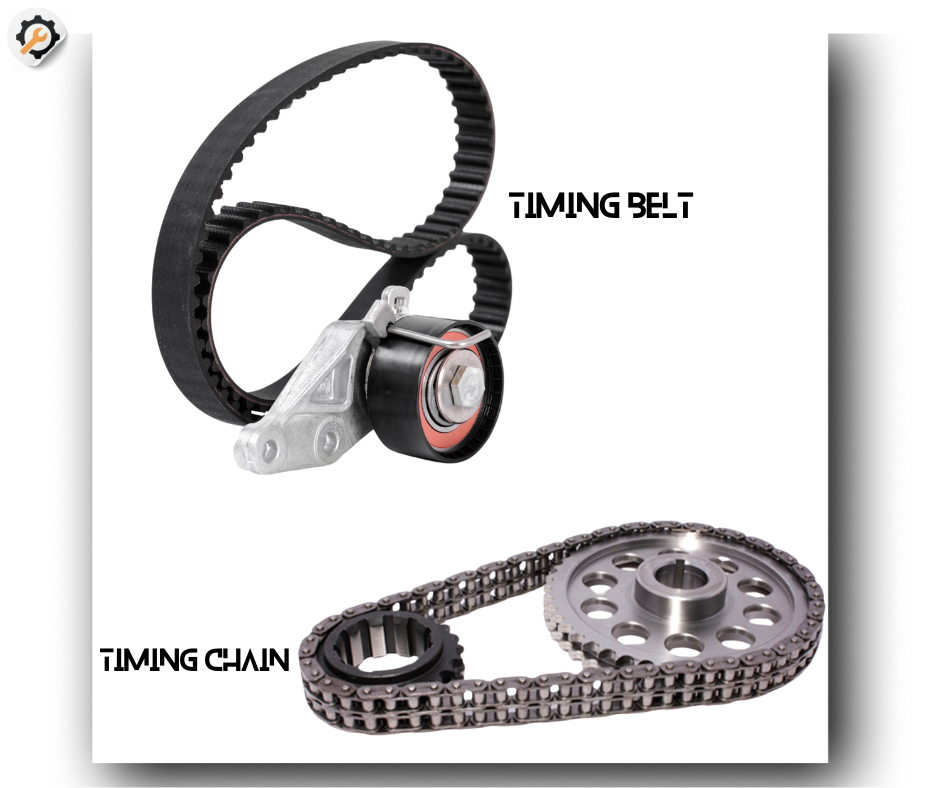Timing Chain vs Timing Belt: What’s the Difference?

When it comes to your engine’s timing system, two components are the stars of the show: the timing chain and the timing belt. Both are crucial for keeping your engine running smoothly, but they work in different ways, wear at different rates, and have different maintenance needs. If you’ve ever wondered which one your car uses, or when you should service them, this is the guide you need.
Let’s break down the key differences between a timing chain and a timing belt, how to identify which your car has, and what you should do to keep them in top shape.
What’s the Function of a Timing System?
The timing system is responsible for synchronizing the engine’s camshaft and crankshaft. This synchronization allows the valves to open and close at the right intervals, ensuring the pistons move smoothly without colliding. In other words, the timing system keeps your engine running like a well-oiled machine—whether it's a timing chain or a belt that’s doing the job.
Timing Chain: The Long-Lasting Powerhouse
Timing chains are made of metal links, similar to a bicycle chain, and are often housed inside the engine. Chains are generally more durable and designed to last the life of the engine. However, they can stretch or wear out over time, and when they do, they’ll need to be replaced to avoid engine damage.
Signs Your Timing Chain Needs Attention:
- Rattling noises from the engine, especially when starting it cold.
- Engine misfires or poor performance.
- Check engine light coming on due to timing issues.
Pros of a Timing Chain:
- Long lifespan, often outlasting timing belts.
- Stronger and more resistant to wear and tear.
Cons of a Timing Chain:
- More expensive to replace.
- Can be noisy if it starts to wear or stretch.
Timing Belt: The Quiet Workhorse
Timing belts, on the other hand, are made of reinforced rubber and are typically quieter than chains. Most cars built after the mid-2000s have timing belts, which usually need to be replaced every 60,000 to 100,000 miles, depending on the manufacturer’s recommendation.
Signs Your Timing Belt Needs Replacement:
- Squealing or ticking noises coming from the front of the engine.
- Difficulty starting the car, or complete failure to start.
- Visible wear such as cracks or fraying on the belt.
Pros of a Timing Belt:
- Quieter than a timing chain.
- Less expensive to manufacture and replace.
Cons of a Timing Belt:
- Needs to be replaced more frequently than a timing chain.
- Can snap suddenly, causing catastrophic engine damage if not replaced in time.
How to Identify Which Your Car Has
Not sure if your vehicle has a timing chain or belt? Here’s how to find out:
- Check the owner’s manual: This is the easiest way to identify what kind of timing system your car uses.
- Look under the hood: Timing belts are often covered by plastic or rubber housings, while timing chains are usually encased in metal. If you can’t see it, it's likely a chain.
- Ask your mechanic: If you’re still unsure, your mechanic can quickly identify which timing system your car has and let you know if it’s time for maintenance.
When to Service Your Timing System
For cars with a timing belt, replacing it at regular intervals is crucial. Ignoring the manufacturer’s recommended replacement schedule could lead to a snapped belt and severe engine damage. For timing chains, regular inspections are important, especially if you start to notice rattling noises or a decline in engine performance.
Whether you have a timing belt or a chain, failing to service them on time can lead to major engine damage, costing you much more than a routine replacement.
Keep Your Engine in Sync with Sparesworld
At Sparesworld, we offer high-quality timing belts and chains, along with expert advice on when and how to replace them. Don't wait until it's too late—keep your engine running smoothly by ensuring your timing system is in top condition. Reach out to Sparesworld today for all your timing chain and belt needs!

 Loading..
Loading..